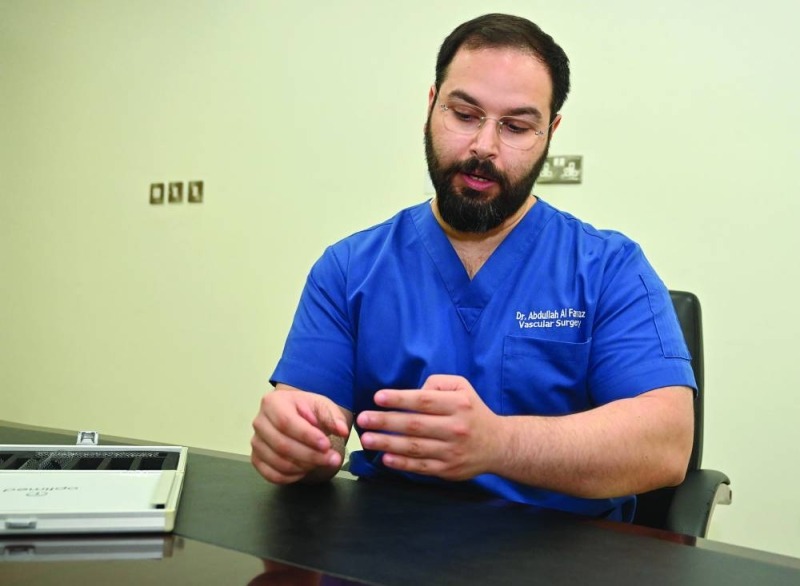Kuwait hospital achieves milestone with first inclined stent surgery
Mubarak Al-Kabeer Hospital’s medical team, led by Dr. Abdullah Al-Fawaz, successfully implanted Kuwait's first inclined stent for a rare case of May-Thurner syndrome, which had resulted in multiple intravenous clots.

• Dr. Abdullah Al-Fawaz, vascular surgery consultant and faculty member at Kuwait University’s Faculty of Medicine, said that “the patient was suffering from a blockage in the main vein of the pelvis on the left side, which had caused several clots and worsened her symptoms.”
A medical team at Mubarak Al-Kabeer Hospital successfully performed Kuwait’s first inclined stent implantation for a rare case of May-Thurner syndrome, which had previously caused multiple intravenous clots, according to Al Rai newspaper.
On the sidelines of the operation, Dr. Abdullah Al-Fawaz, vascular surgery consultant and faculty member at Kuwait University’s Faculty of Medicine, confirmed to the newspaper that “the patient was suffering from a blockage in the main vein of the pelvis on the left side, which had caused several clots and worsened her symptoms, including swelling, numbness, and pain when walking or standing for long periods, as well as redness in the affected area.”
Dr. Al-Fawaz explained that ‘the diagnosis was made using a CT scan, which revealed pressure on the main pelvic vein on the left side, after which the patient was referred for the necessary procedures.’
He noted that based on the diagnosis, which confirmed the patient had May-Thurner syndrome, it was decided to implant an inclined stent, which differs from the traditional straight stent. The procedure was performed under local anesthesia without any complications.

He added that patients who undergo this type of stent placement can typically be discharged within 24 hours, and explained that the inclined stent, when used to treat the left vein, does not affect the vein responsible for the other lower limb, the right vein.
He praised the efforts of the medical team at Mubarak Al-Kabeer Hospital that participated in the operation, acknowledging the cooperation between the Vascular Surgery Department and the Interventional Radiology Department, led by Dr. Adel Al-Ali.
He explained that May-Thurner syndrome is a congenital defect that results in the compression of an artery on a vein in the abdomen and pelvis, leading to reduced blood circulation in the left lower limb and the potential for multiple clots, which over time can cause symptoms such as numbness, swelling, or pain, especially during prolonged standing or walking.
He noted that the prevalence of May-Thurner syndrome, according to anatomical studies in medical schools, is around twenty percent in the samples studied, and approximately five percent of venous thrombosis cases are caused by this condition. However, many patients with venous thrombosis are treated for recurrent clots, as in the case we handled.

He emphasized the importance of raising awareness about this rare disease, advising that patients with venous thrombosis should consult a specialist, such as a hematologist or vascular surgeon, at least once to determine whether they have May-Thurner syndrome or other conditions that could cause venous thrombosis.
He explained that most cases of intravenous thrombosis in Kuwait are caused by obesity, lack of physical activity, and unhealthy lifestyles, but around two to five percent are attributed to this disease.















